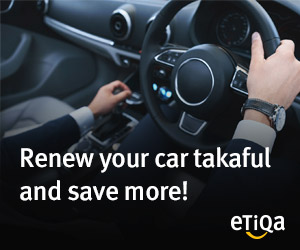Blockchain was originally developed as the accounting method for Bitcoin. It used distributed ledger technology (DLT) which are appearing in a variety of commercial applications today. Currently, the technology is primarily used to verify transactions, within digital currencies though it is possible to digitize, code and insert practically any document into the blockchain. Doing so creates an indelible record that cannot be changed; furthermore, the record’s authenticity can be verified by the entire community using the blockchain instead of a single centralized authority (What is a Blockchain, n.d.).
A block is the ‘current’ part of a blockchain, which records some or all of the recent transactions. Once completed, a block goes into the blockchain as a permanent database. Each time a block gets completed, a new one is generated. There is a countless number of such blocks in the blockchain, connected to each other (like links in a chain) in proper linear, chronological order (What is a Blockchain, n.d.).
The blockchain was designed so these transactions are immutable, meaning they cannot be deleted. The blocks are added through cryptography, ensuring that they remain meddle-proof: The data can be distributed, but not copied. However, the ever-growing size of the blockchain is considered by some to be a problem, creating issues of storage and synchronization (What is a Blockchain, n.d.).
Read more: Everything You Need To Know About Cryptocurrency
How Does Blockchain Work ?
1. As each transaction occurs and the parties agree to its details. It’s encoded into a block of digital data and uniquely signed or identified (What is Blockchain? n.d.).
2. Each block is connected to the one before and after it creating an irreversible, immutable chain (What is Blockchain? n.d.).
3. Blocks are chained together, preventing any block from being altered or a block being inserted between two existing blocks (What is Blockchain? n.d.).
Blockchain and Bitcoin
The blockchain is the main technological innovation of Bitcoin. Bitcoin isn’t regulated by a central authority. Instead, its users dictate and validate transactions when one person pays another for goods or services, eliminating the need for a third party to process or store payments. The completed transaction is publicly recorded into blocks and eventually into the blockchain, where it’s verified and relayed by other Bitcoin users. On average, a new block is appended to the blockchain every 10 minutes, through mining (What is a Blockchain, n.d.).
Based on the Bitcoin protocol, the blockchain database is shared by all nodes participating in a system. Upon joining the network, each connected computer receives a copy of the blockchain, which has records, and stands as proof of, every transaction ever executed. It can thus provide insight about facts like how much value belonged a particular address at any point in the past. Blockchain.info provides access to the entire Bitcoin blockchain (What is a Blockchain, n.d.).
Public vs Private Blockchain
1. Public Blockchain
A public blockchain, a fully decentralized platform where anyone can read and send transactions. The valid transactions are included in the ledger. Public blockchains are secured by cryptoeconomics, a combination of economic incentives and cryptographic verification. The degree of influence in the consensus process is proportional to the quantity of economic resources brought in the system (What is Blockchain and Understand, n.d.).
2. Private Blockchain
In a private blockchain write permissions are kept centralized to one organization. In this system the access and permissions are tightly controlled and rights to modify are restricted to the central authority. A proprietary system built on private blockchain will reduce the transactional cost and increase validation efficiency (What is Blockchain and Understand, n.d.).
Practical Applications of Blockchain
As it's a distributed database system, serving as an open electronic ledger, a blockchain can simplify business operations for all parties. For these reasons, the technology is attracting not only financial institutions and stock exchanges, but many others in the fields of music, diamonds, insurance, and Internet of Things (IOT) devices. Advocates have also suggested that this kind of electronic ledger system could be usefully applied to voting systems, weapon or vehicle registrations by state governments, medical records, or even to confirm ownership of antiquities or artwork (What is a Blockchain, n.d.).
Given the potential of this distributed ledger technology (DLT) to simplify current business operations, new models based on blockchain have already begun to replace the expensive and inefficient accounting and payment networks of the financial industry. Blockchain technology could free up billions of dollars: A recent Goldman Sachs report suggested that it could save stock market operators up to $6 billion a year (What is a Blockchain, n.d.).
Currently, the use of blockchain technology is predominant in finance and banking sector. Banks have started looking into how the blockchain might provide generous cost savings by allowing back-office settlement systems to process trades, transfers and other transactions much faster (What is a Blockchain, n.d.). Noteworthy examples are:
- Deutsche Bank: Exploring the use cases of blockchain in currency settlement, trade processing, derivative contracts etc (What is Blockchain and Understand, n.d.).
- US Federal Reserve: Developing a digital cash system using blockchain with the help of IBM (What is Blockchain and Understand, n.d.).
- Barclays Bank: Runs dedicated labs in London for bitcoin and blockchain entrepreneurs, coders and businesses (What is Blockchain and Understand, n.d.).
- NASDAQ: Using Nasdaq Financial Framework, it has opened up its blockchain services to more than 100 of its market operator clients (What is Blockchain and Understand, n.d.).
- Citigroup: Implementing a distributed ledger technology using blockchain and a test currency called ‘Citicoin’ (What is Blockchain and Understand, n.d.).
Read more: What's Fintech And Why It Matters ?
Blockchain networks can be used for "smart contracts," that automatically execute when certain conditions are met (Lucas Mearian, 2018). Smart contracts are contracts that automatically execute when certain conditions are met from all interested parties. The automation can help to speed the process up, ensuring no mistakes along the way (Arjun Kharpal, 2018). For example, Ethereum, Ether exchange users must meet pre-determined conditions that prove someone owns the cryptocurrency and have authority to send the money they claim to own. In addition, multiple blockchain users can create contracts that require more than one set of inputs to trigger a transaction. For example, real estate transactions that require sign offs between buyers, sellers and their financial institutions (Lucas Mearian, 2018).
Read more: Smart Contracts
This immutability and transparency of blockchain ensure that there is no need for any third person to look after the database. For instance, an African farmer bought a piece of land, but in a flood, he lost his copy of the deed and agreement of the land. Now he has no way of claiming he owns his land. And he had a digital copy of the ownership agreement on a governmental database, but that too was destroyed during the flood. Now, this farmer is at a loss!! He would have avoided these problems had he filed his land deed copy on a blockchain, which would have had multiple copies distributed around the world (Sudhir Khatwani, 2018).
For supply chain management, the blockchain technology offers the benefits of traceability and cost-effectiveness. Put simply, a blockchain can be used to track the movement of goods, their origin, quantity and so forth. This brings about a new level of transparency to B2B ecosystems -- simplifying processes such as ownership transfer, production process assurance and payments (Jyoti Agrawal, 2018). For instance, in shipping industry, a bill of lading for cargo shipments has traditionally been paper based, which requires multiple sign-offs by inspectors and receivers before goods can be delivered. Even when the system is electronic, it still requires multiple parties to sign off on cargo shipments, creating a lengthy administrative process. To try and streamline that cumbersome process, the world's largest container shipment operator, Maersk, in March 2017 announced it is using a blockchain-based ledger to manage and track the paper trail of tens of millions of shipping containers by digitizing the supply chain. And Maersk has teamed up with IBM on a new blockchain-based electronic shipping platform (Lucas Mearian, 2018).
Each participant in the shipping supply chain can view the progress of goods through the blockchain ledger, understanding where a container is in transit. They can also see the status of customs documents, or view bills of lading and other data in real time. And, because it creates an immutable record, no one party can modify, delete or even append any one of the blocks without the consensus from others on the network (Lucas Mearian, 2018).
In accounting sector, recording transactions through blockchain virtually eliminates human error and protects the data from possible tampering. Keep in mind that records are verified every single time they are passed on from one blockchain node to the next. In addition to the guaranteed accuracy of your records, such a process will also leave a highly traceable audit trail (Jyoti Agrawal, 2018).
The government of Moscow took initiative to test the effectiveness of blockchains in local elections. Doing so will significantly diminish the likelihood of electoral fraud, which is a huge issue despite the prevalence of electronic voting systems. Moreover, NASDAQ leveraged blockchain technology to facilitate shareholder voting (e-voting) (Jyoti Agrawal, 2018).
Australia’s stock exchange has already dead set on switching to a blockchain-powered system for their operations such as securities and commodities trading (Jyoti Agrawal, 2018).
What Makes Blockchain for Business Better for Business?
1. It’s Distributed
Blockchain creates a shared system of record among business network members, eliminating the need to reconcile disparate ledgers (What is Blockchain? n.d.).
2. It’s Permissioned
Each member of the network must have access privileges. Information is shared only on a need-to-know basis (What is Blockchain? n.d.).
3. It’s Immutable
Consensus is required from all members and all validated transactions are permanently recorded. Even a system administrator can’t delete a transaction (What is Blockchain? n.d.).
Advantages of Blockchain
Efficiencies resulting from DLT can add up to some serious cost savings. DLT systems make it possible for businesses and banks to streamline internal operations, dramatically reducing the expense, mistakes, and delays caused by traditional methods for reconciliation of records (What is a Blockchain, n.d.).
The widespread adoption of DLT will bring enormous cost savings for financial and business world, advocates say:
1. Electronic ledgers are much cheaper to maintain than traditional accounting systems; the employee headcount in back offices can be greatly reduced (What is a Blockchain, n.d.).
2. Nearly fully automated DLT systems result in far fewer errors and the elimination of repetitive confirmation steps (What is a Blockchain, n.d.).
3. Blockchain transactions can reduce transaction times to minutes and are processed 24/7 (What is Blockchain and Understand, n.d.). Minimizing the processing delay also means less capital being held against the risks of pending transactions (What is a Blockchain, n.d.).
4. Data structure build using blockchain allows users to make and verify transactions without a third-party involvement. This strongly reduces the risk of a backdoor transaction and unauthorized intervention. The more widespread the environments, the more difficult it is to tinker with data (What is Blockchain and Understand, n.d.).
5. Optimize ecosystems by facilitating transactions with suppliers, partners and customers helps streamline business processes and transactions (What is Blockchain? n.d.).
6. Information in blockchains is viewable by all participants and cannot be altered. This will reduce risk and fraud, and create trust (Blockchain Explained, n.d.).
7. The distributed and encrypted nature of blockchain mean it will be difficult to hack. This shows promise for business and IoT security (Blockchain Explained, n.d.).
8. A transaction system build using blockchain eliminates third party intermediaries and overhead costs for exchanging assets hence reducing transaction costs (What is Blockchain and Understand, n.d.).
In addition, some smaller number of millions will be saved by shrinking the amount of capital that broker/dealers are required to put up to back unsettled, outstanding trades. Greater transparency and ease of auditing should lead to savings in anti-money laundering regulatory compliance costs, too (What is a Blockchain, n.d.).
Blockchain's removal of almost all human involvement in processing is particularly beneficial in cross-border trades, which usually take much longer because of time-zone issues and the fact that all parties must confirm payment processing. Blockchain systems can set up smart contracts or payments triggered when certain conditions are met. For example, used a smart contract that automatically made partial payments when the cotton shipment reached specific geographic milestones (What is a Blockchain, n.d.).
Hurdles in Adopting Blockchain Technology
The roadblocks to DLT are politics, regulatory approval, and the many thousands of hours of custom software design and front and back-end programming still required to link up the new blockchain ledgers to current business networks (What is a Blockchain, n.d.). Problems that still need to be addressed include:
1. Security Remains A Concern
Several central banks, including the Federal Reserve, the Bank of Canada and the Bank of England, have launched investigations into digital currencies. According to a February 2015 Bank of England research report: “Further research would also be required to devise a system which could utilize distributed ledger technology without compromising a central bank’s ability to control its currency and secure the system against systemic attack.” (What is a Blockchain, n.d.)
2. Banks Are Not Interested in An Open-Source Model for Identity
Both banks and regulators want to maintain close control. The development of a single digital identity passport authorizer is a critical next step (What is a Blockchain, n.d.).
3. Regulation is Critical
Regulation is critical in creating an open digital environment for commerce and financial transactions. Current physical certificates must be digitized to gain the full benefits of a fully electronic system. Other questions to be answered include: Who is responsible for maintaining and managing the blockchain? Who admits new participants to the blockchain? Who validates transactions? and who determines who sees which transactions? (What is a Blockchain, n.d.)
The Bottom Line
Blockchain technology is more efficient, transparent and cost-effective for new generation of transactional applications (What is Blockchain and Understand, n.d.). The demand for blockchain-based services is on the rise, and the technology is maturing and advancing at a rapid pace. The potential applications for blockchain technology are almost without limit. At the moment, several of these applications are still either in the development stage or in beta testing. With more money being poured into blockchain-based startups, consumers should not be surprised to see DLT services and products becoming more mainstream in the near future (What is a Blockchain, n.d.).
Edited by: 浪子
Bibliography
What is a Blockchain. (n.d.). Retrieved from https://www.investopedia.com/terms/b/blockchain.asp
Arthur Iinuma. (2018). What Is Blockchain And What Can Businesses Benefit From It? Retrieved from
https://www.forbes.com/sites/forbesagencycouncil/2018/04/05/what-is-blockchain-and-what-can-businesses-benefit-from-it/#6ff64856675f
What is Blockchain? (n.d.). Retrieved from https://www.ibm.com/blockchain/what-is-blockchain
Lucas Mearian. (2018). What Is Blockchain? The Most Disruptive Tech in Decades. Retrieved from
https://www.computerworld.com/article/3191077/security/what-is-blockchain-the-most-disruptive-tech-in-decades.html
Blockchain Explained From an Enterprise Perspective. (n.d.). Retrieved from
https://www.sap.com/sea/products/leonardo/blockchain/what-is-blockchain.html
Arjun Kharpal. (2018). Everything You Need to Know About the Blockchain. Retrieved from
https://www.cnbc.com/2018/06/18/blockchain-what-is-it-and-how-does-it-work.html
Sudhir Khatwani. (2018). The Ultimate Guide To Understanding What A “Blockchain” Is & How It Works.
Retrieved from https://coinsutra.com/blockchain/
Jyoti Agrawal. (2018). 8 Benefits of Blockchain to Industries Beyond Cryptocurrency. Retrieved from
https://www.entrepreneur.com/article/306420
What is Blockchain and Understand Its Key Benefits. (n.d.). Retrieved from
https://www.marutitech.com/blockchain-benefits/
The Ultimate Guide To Understanding What's Blockchain Technology
 Reviewed by 浪子
on
November 04, 2018
Rating:
Reviewed by 浪子
on
November 04, 2018
Rating:
 Reviewed by 浪子
on
November 04, 2018
Rating:
Reviewed by 浪子
on
November 04, 2018
Rating:






















